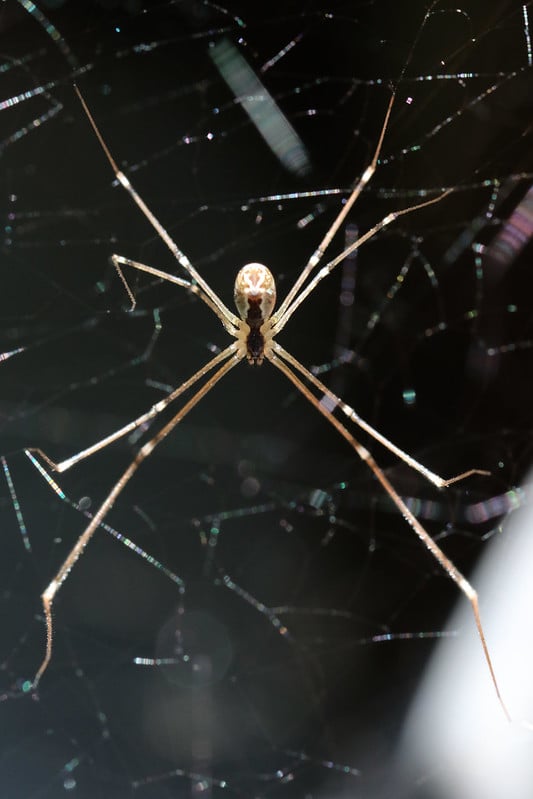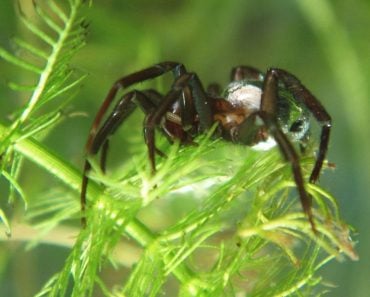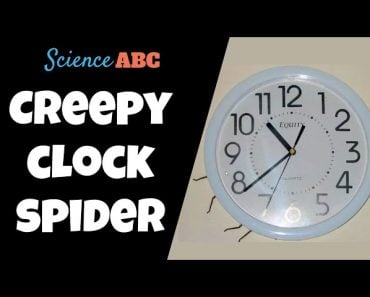Most cobwebs actually consist of abandoned spider webs. These home-abandoning spiders, mainly those of the species Theridiidae, build these sticky webs for catching prey.
Cobwebs are a great reminder that it’s time to clean the hard-to-reach parts of your home. These annoying cobwebs form in the corners of our rooms, on the edges of the ceilings and on the sides of our walls. You can get rid of them easily, but they seem to come back in no time!
The conventional assumption is that these cobwebs form out of the blue because dust particles stick to each other, maybe they are just lonely, but cobwebs do not form spontaneously. Actually, the real secret behind cobwebs is much scarier.
Recommended Video for you:
Cobwebs Are The Work Of Spiders
As it turns out, the majority of cobwebs actually consist of abandoned spider webs!
Web-building spiders create elaborate webs for catching prey (wandering spiders chase after their prey, rather than building webs). Over time, however, mechanical stress and dust accumulation weakens the web, forcing the spider to abandon it and build a new one. That’s why you never see a spider on a cobweb, even though the eight-legged arachnid is responsible for its creation!
The word cobwebs comes from Old English, coppeweave, and originated sometime in the 14th century. Coppe comes from attercoppe, which means spider or literally “venomous head.” Web also has its origins in Old English and means tapestry or something intricately woven.
Cobweb Spiders (Family: Theridiidae) Make Cobwebs
Literally, cobwebs are only old spiderwebs, but one family of spiders got the top title – Theridiidae or “cobwebs-spiders.” These home-abandoning spiders—forming one of largest spider families, with over 3000 species—get their name from their distinctly disorganized webs. Their tangled web formations don’t have any discernible pattern. The different species have different disorganized patterns of web-building, but there are some overall commonalities.

Most are skilled hunters. They anchor their nets to support structures such as beams and wall corners, creating a three-dimensional noose. This noose then becomes a common nuisance in the home as soon as it serves its real purpose for the spider.
The ends of these nets, when active, have sticky droplets that stick unsuspecting insects like flies to the net. The same sticky property of the net also attracts dust and pollen, agents that tend to damage the net.
Other Web-building House Spiders
The Theridiidae are not the only spiders that use the corners of our houses to build their nests. There are a few other spider species whose webs you may also find at your house.
One group are the ‘daddy longlegs spiders’ (not to be confused with the other 8-legged daddy longlegs that live under rocks and is NOT actually a spider).
Once referred to as cellar spiders, they belong to the Pholcidae family. Their webs can also be found in ceiling corners, under stairs or other unfrequented places in your house. Their webs are irregular and could easily be mistaken for cobwebs by an untrained eye. However, their webs exhibit slight structural differences.

Some cobwebs have a funnel-shaped, tubular shape that spreads like a leaf. These cobwebs can be attributed to funnel web spiders, which consist of a few different species. Their cobwebs are usually found in dimly lit areas such as warehouses or in boxes and cupboards.
The last spider to be mentioned in this article are the orb-weavers, noted for their geometric circular spider webs, which graphic designers could use to demonstrate an ideal web. As part of the Araneidae family, they are more common in gardens and trees, but sometimes also in homes.
What About Individual Strands Of Dust?
Okay, so now we know that the haphazard cobwebs were once active spider webs, but what about the individual strands of dusty material you see hanging from the ceiling? Are spiders also responsible?
In fact, they are.
Spiders, as well as a few other tiny arthropods, have the ability to produce silk strands for travel and protection. Spiders specifically use this strand of silk as a safety line when they jump or swing from place to place.
The technical term for spiders travelling with silk is ballooning. It’s a bit like Spider-Man when you think about it.
These silk strands differ from those from which the spider makes webs. The silk they use to balloon is dragline silk, also called ampullate silk. This is not the only use of dragline silk, but it may also sometimes be used as a scaffolding for the web.
Again, these left-over strands of silk gather dust over time, resulting in those single irritating dust strands that we’ve all walked through and then had a tiny panic attack while trying to pull them off our face.
Spider Webs Do Not Decompose Easily
An even more intriguing thing is how long a spider web lasts. Spider silk is a tough, strong and durable material, and scientists have been trying for some time to replicate its tensile strength and elasticity, which also gives it some immunity against degradation.
Although dust and pollen damage the web and render it unusable for the spider, it does not simply crumble when the spider is not there to care for it. A team of scientists studied the strength of 4-year-old stray spider silk and found that, although its mechanical strength had diminished, it was still surprisingly strong.
Spider silk can be degraded by enzymatic action (spiders can eat their silk, after all), but environmental degradation is much slower. Silk strands consist of complex amino acid crystal structures that make the silk very durable.
Conclusion
Spiders are the secret behind the dust snakes that casually adorn our homes. As strange as it may sound to some people, spider lovers may find cobwebs interesting, as they can be used to track the movements and habits of spiders in web building. Or maybe not.
Spider webs are very difficult to spot because of the wafer-thin strands they are made of, and by the time they are discovered, the spider is likely to have disappeared and the web is already covered in the dust left for a newer, more invisible home!












